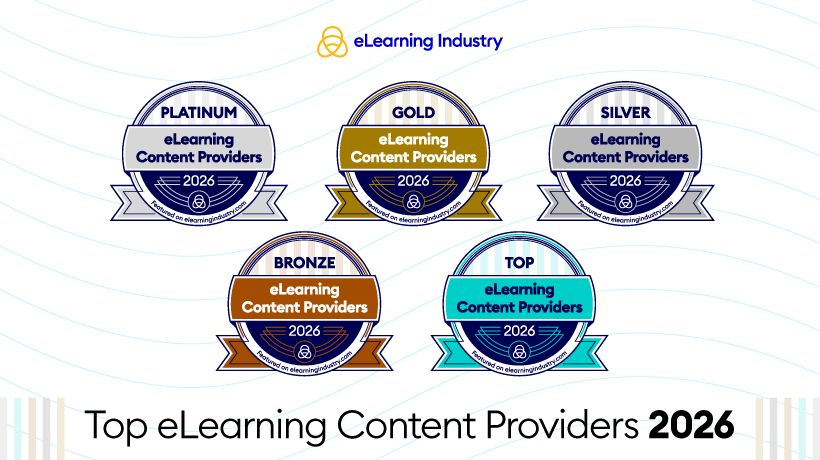The 5 Worst Fears Of Corporate eLearning Designers
There are things that send chills down the spine of all Corporate eLearning Designers. As they say, facing your fears is the best way to overcome them. In this article, we'll take a closer look at the top 5 things that scare the living daylights out of instructional designers who specialize in corporate eLearning. Hopefully, it will give you the chance to face your professional fears head on and bid them farewell, so that you can develop the best possible corporate eLearning experiences for your employees.
- Employees who are terrified of technology.
It’s true that we live in a tech-centric era, but there are some corporate learners who aren’t ready to hop on board the digital bandwagon. They might be afraid of data security or they may simply be unaware of how to use the tools and gadgets effectively. Whatever the case may be, they are terrified of participating in corporate eLearning experiences that involve technology, especially those that feature more interactive multimedia components. To overcome this fear you offer your corporate learners training on how to use the technology to their advantage. If corporate learners are tech-resistant, then stress the benefits of corporate eLearning and tie it into real world advantages and applications. For example, you can show corporate learners that online forums and social networking sites can benefit every aspect of their lives, including their careers and personal relationships. You should also be ready to offer them assistance after the fact if they run into any issues along the way. - Your corporate eLearning program completely misses the mark.
There are few things worse than spending countless hours and resources on developing your corporate eLearning course, only to realize that it doesn’t meet any of your goals or objectives. If your corporate eLearning course misses the mark then it lacks real value and does not offer a significant ROI. To ensure that your corporate eLearning course makes a difference and hits the target you should consider audience research, training needs analysis, and even task analysis for corporate eLearning, if necessary. You must find out as much as possible about what they need to learn, what they’ve already learned, and how you can successfully fill their knowledge or performance gaps long before you begin the development process. - Your training facilitators are completely unprepared.
For your corporate eLearning course to be effective you must have trainers, facilitators, and leadership who are well informed and fully prepared. If they don’t know how to use the technology, are unaware of the goals, and do not know how to connect with your corporate learners then, chances are, your initiatives will fail. Keep in mind that they are the face of your corporate eLearning program; the human element that ensures everything is on track and on target. Thus, you should make certain they have a complete understanding of what needs to be done and how to do it with the tools at their disposal. In other words, the trainers have to be trained in ahead of time. This may come in the form of online tutorials or walkthroughs, orientations, or other corporate eLearning activities that get them in-the-know. - Employees don’t have room in their schedule for corporate eLearning.
Many corporate learners list lack of time as their number one reason for not enrolling in corporate eLearning courses. Employees can simply opt out of the corporate eLearning program, due to lack of time, even though it may benefit their on-the-job performance. The key is to make your corporate eLearning course convenient and quick, so that corporate learners can fit it into their busy schedules. Ideally, you should create mobile learning experiences that employees can complete in just a few minutes. For example, a half-hour corporate eLearning course can be broken down into three 10 minute modules that they can access on-the-go. You may also want to opt for a self-paced asynchronous approach that allows your corporate learners to develop their own training schedules. If they still don’t have room in their weekly agendas, be sure to stress the real world benefits of the course to boost their motivation. It may just be the nudge they need to actively participate. - You have not developed a sound eLearning assessment strategy.
Developing a sound eLearning assessment strategy may take time, but it is well worth the time and investment. The only way to determine if your corporate eLearning is truly effective is to assess your corporate learners and the overall corporate eLearning strategy. Online exams, scenarios, simulations, and even feedback, such as surveys and focus groups, can give you clear idea of whether your corporate eLearning course is on target. It can also help you fill any performance gaps by identifying what your employees know and what skill sets still need to be developed. Be sure to include a good mix of eLearning assessment types in order to test every aspect of the corporate eLearning course or corporate learners' progress. Simulations, online scenarios, eLearning games, and traditional multiple choice/short answer exams are all effective eLearning assessment tools for corporate eLearning. Audience research can help you determine which methods are best for your employees’ needs and preferences.
As Franklin D. Roosevelt once said: "The only thing we have to fear is fear itself". So, why not recognize your fears and overcome them in order to create memorable online training initiatives for your corporate learners. Use this article to defeat the fears that are preventing your corporate eLearning course from meeting its true potential.
Do you want to know the most common mistakes you should avoid when creating corporate eLearning courses? Read the article Top 9 Online Corporate Training Mistakes You Should Avoid to discover corporate training pitfalls that you should steer clear of during your next corporate eLearning project.






![10 Scary Realities Of Corporate eLearning [eBook Release]](https://cdn.elearningindustry.com/wp-content/uploads/2021/10/shutterstock_378841606.jpg)

